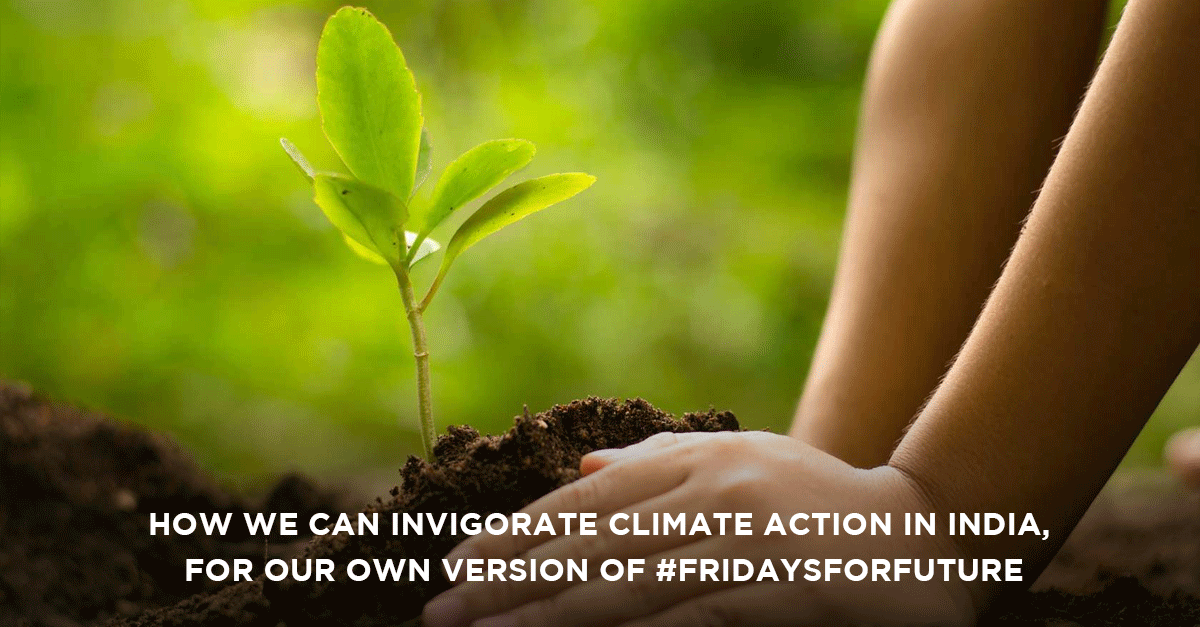Have you heard of Jadav Payeng, the Forest Man of India? You have probably not come across him during prime-time news. Payeng is one of India’s environmental crusaders who has spent 30 years of his life planting trees, creating a man-made forest of 550 hectares. There are many such unsung heroes in India who are making a difference to the environment, and what is even more inspiring is that many of them are young, and likely to continue their good work for years to come.
I recently came across the news of a six-year Jannat, from Srinagar, who set about on her mission to clean the Dal Lake. Anubhav Wadhwa from New Delhi, now 20 years old, created a company which recycles used tyres without harming the environment, when he was 14. A group of teens from Gurugram recently won an award for building a robot that can segregate waste, making recycling easier.
Climate change is one of the largest and most complex problems that the world has ever faced and India’s success in mitigating it is crucial for the effort to succeed globally. By 2020, pressure on India’s water, air, soil, and forests is expected to become the highest in the world. In fact, one of the most significant ways that climate change will impact the lives of people in India will be through its water resources. We are already feeling the effects of this with erratic rainfall in some states that are faced with droughts, while flood cause distress in many other areas. India’s children, who are actively involved in climate action in India, are creating their own version of #Fridaysforfuture.
History of mass movements
India is not new to mass movements. Over the years, such movements have often even led to changes in public policy. Records from the 1700s tell us of local Bishnoi villagers, in the Marwar region of Rajasthan, starting the Bishnoi Movement to save sacred trees from being cut down by the king’s soldiers for a new palace. In 1973 the Chipko Movement in the Tehri-Garhwal district of Uttarakhand rallied for the protection of trees on the Himalayan slopes from timber contractors. The women of Advani village of Tehri-Garhwal tied the sacred thread around trunks of trees and hugged them, thereby leading to the coining of the word Chipko or “hug the tree movement”. In 1982 the tribals of Bihar’s Singhbhum district started the Jungle Bachao Andolan where they fought against the government’s decision to replace the natural sal forest with teak. There are many such inspirational examples across the length and breadth of India.
Addressing climate change
At the recent UN Climate Action Summit in New York, Prime Minister Narendra Modi highlighted the key points of India’s robust action to address climate change. He mentioned something very significant when he said that “need and not greed” would be the guiding principle of India to tackle climate change.
On India’s Independence Day, this year, Modi called for a mass movement to free India from single use plastic. Modi has also stressed on low-carbon growth and reducing India’s coal dependency. Around 68 per cent of India’s greenhouse gas emissions come from energy production, which remains largely reliant on coal power plants. The government is trying to wean off coal by investing significantly in renewable energy, as well as introducing cleaner use of coal in the interim period.
India’s National Action Plan on Climate Change (NAPCC) is taking active steps to focus on the use of solar energy for power generation and other uses, with the ultimate objective of making solar competitive with fossil-based energy options. It is also introducing the Energy Conservation Building Code, and has set a goal of 20 per cent improvement in water use efficiency through pricing and other measures to deal with water scarcity because of climate change.
India now has a national mission sustaining the Himalayan Ecosystem that protects biodiversity in the Himalayan region and find ways to stop the glaciers from melting. The NAPCC also looks at afforestation of 6 million hectares of degraded forest lands and expanding forest cover from 23 to 33 per cent of India’s territory. Some of their other agendas include introducing climate-resilient crops and expansion of weather insurance mechanisms, and sustainable agricultural practices.
Changing Behaviour
The greatest obstacle to change comes from people’s resistance to altering their lifestyles. As they say, in India, we need behavioural change, not climate change. Creating awareness about the consequences of consumer choices will play a significant role in reducing energy consumption and GHG emissions. For instance, resource efficient buildings and low carbon construction materials, electric vehicles and district heating and cooling solutions, can all add up to a massive change. More rooftop photovoltaic panels, solar water heaters, walking or cycling for short distances, using public transport mass transit and reducing food waste are every day acts that can create huge cumulative effects, when everyone in the country starts doing it.
As much as the dangers of climate change affect us all, the fact is we can add to the solution through our everyday actions. It may not be possible for us all to grow an entire forest, but surely a dozen trees is possible for every one of us, as a target. For a nation with a long history of respect for the environment, many of our choices in recent decades have let us down. It’s time to rejuvenate the tradition, by taking on the responsibility of eco-friendly life choices and actions.

